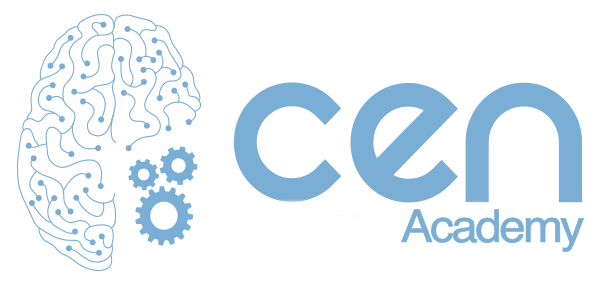Neurorehabilitation has been shaped by decades of research in motor learning, but also by dogmas that need to be reassessed. Simplistic statements like “there is no better training than life itself” may be inspiring, but they ignore the complexity of post-stroke recovery. If merely repeating daily tasks were enough to restore function, we wouldn’t have chronic stroke patients with persistent motor deficits despite years of performing everyday activities. In fact, many patients remain dependent on their daily life activities and real recovery is still a pending issue.
It is time to address this issue with scientific rigor.
Task-oriented vs. Non-task-oriented training: Why choose only one?
Traditional rehabilitation has favored task-oriented training, where patients repeat specific functional activities in the hope of improving independence in daily life. While this approach has demonstrated effectiveness in certain areas, it also has significant limitations:
- It does not necessarily restore original motor control, but rather reinforces compensatory strategies.
- It may limit recovery of certain movements if introduced too early in the recovery process.
- It does not explore the latent potential for recovery, in subacute and chronic stroke patients.
On the other hand, the non-task-oriented approach proposes a different perspective: before training specific functions, it is necessary to rebuild movement quality and control. Research in movement neuroscience (Zeiler & Krakauer, 2013) has shown that, in the early months after a stroke, the brain undergoes a heightened plasticity period, where the right stimulation can reorganize motor circuits and enhance recovery.
So why insist on confining rehabilitation to a single strategy?
Key differences between the two approaches

Not all patients are the aame: tailoring strategies to different impairment levels
One of the biggest mistakes in rehabilitation is applying the same approach to all patients. The needs of a patient with mild hand dexterity loss are vastly different from those of someone with severe hemiparesis and cognitive impairments. Rehabilitation strategies must be tailored accordingly:
1️⃣ Mild cases:
- May benefit from more task-oriented training but should still incorporate motor exploration to optimize fine motor control and precision.
- Attention should be given to subtle deficits that could limit functional recovery (e.g., sensory or coordination impairments).
2️⃣ Moderate cases:
- Require an initial phase of motor exploration to recover movement patterns before transitioning to functional task training.
- Technologies such as virtual reality and robotics can be useful to provide high-intensity behavioural non task oriented training.
3️⃣ Severe cases (severe hemiparesis, coexisting cognitive or sensory deficits):
- Recovery is not just a motor problem but also involves perception, attention, and learning.
- These patients can greatly benefit from stimulation-based and high-intensity training strategies before focusing on functional tasks. Neuromodulation could be in these cases a key aspect of the treatment, paired with behavioural interventions.
The role of advanced technologies in rehabilitation: the case of MindPod
The development of immersive and gamified technologies is transforming the landscape of motor rehabilitation. A pioneering example is MindPod, a system created to revolutionize how patients regain motor function: https://mindmaze.com/mindpodvideo/
What makes MindPod different?
- It does not focus on task-specific movements, but instead promotes smooth, continuous motion (such as swimming), fostering more natural recovery.
- Uses non-human avatars to prevent patients from becoming overly aware of their physical limitations.
- Based on behavioural and high-dose training, allowing for repeated stimulation of the nervous system without the boreness of conventional therapy.
- Highly engaging and motivating, making patients enjoy therapy rather than endure it.
More broadly, technology in rehabilitation should be seen as a tool to enhance intensity and training quality. Virtual reality, robotics, and brain stimulation can amplify therapy benefits, particularly in chronic stroke patients where neuroplasticity is lower compared to the early subacute phase.
Even small motor control improvements can be life-changing
One of the most harmful misconceptions in rehabilitation is the belief that if a patient cannot recover 100% of their motor function, small improvements are insignificant. This could not be further from the truth.
A 10-point improvement in the Fugl-Meyer scale (one of the most widely used assessments of post-stroke motor recovery) can significantly impact a patient’s functionality and quality of life.
- A small gain in motor control can mean the difference between grasping a glass independently or needing assistance to drink.
- It may allow a patient to use utensils more effectively, increasing independence in self-care activities.
- It can reduce caregiver burden and enhance the patient’s ability to participate in social and personal life.
This forces us to redefine success in rehabilitation. It is not just about «returning to normal» but about regaining as much autonomy as possible.
Conclusion: moving toward a neuroscience-based hybrid model
Debating whether task-oriented or non-task-oriented training is superior is a false dilemma. Neurorehabilitation should not be about choosing one method over the other but adapting interventions to the patient’s recovery stage and clinical profile.
? First, explore movement: In the early stages, we leverage neuroplasticity to recover motor patterns without rigid functional constraints.
? Then, consolidate skills: Once motor control improves, we integrate functional tasks to maximize independence.
? And use advanced technology to enhance rehabilitation intensity.
If we truly want to revolutionize post-stroke rehabilitation, we must stop relying on outdated slogans and instead embrace what neuroscience tells us: The brain needs training before specialization, and even chronic stroke patients can still improve if we activate their latent potential.
? Even «small» improvements in motor function can drastically enhance a patient’s quality of life. We should never underestimate the impact of rehabilitation.
#Neuroscience #Neurorehabilitation #StrokeRecovery #MotorLearning #Neuroplasticity #Restoration
José López Sánchez
CEO @ Centro Europeo de Neurociencias | Intensive Therapy Specialist

